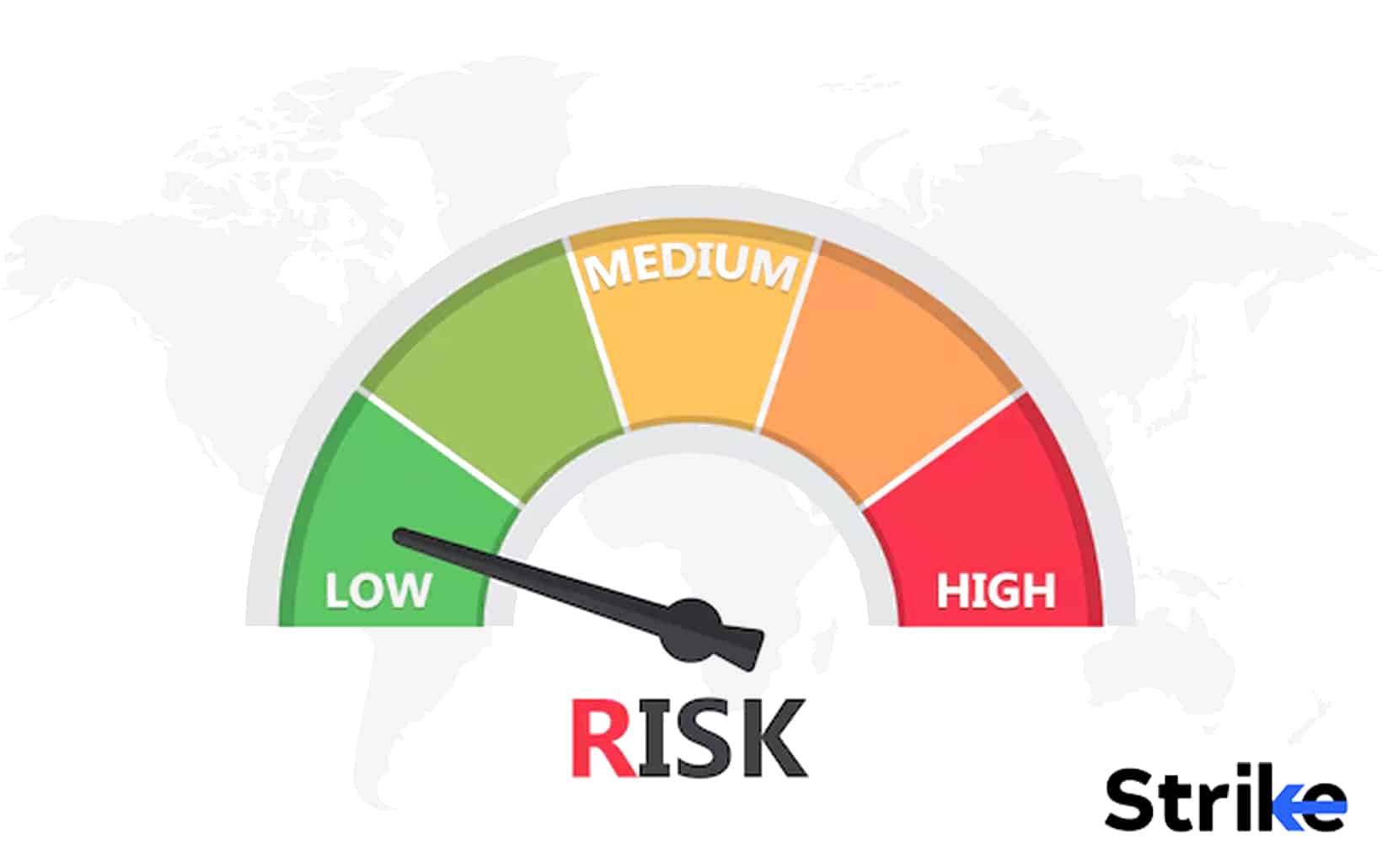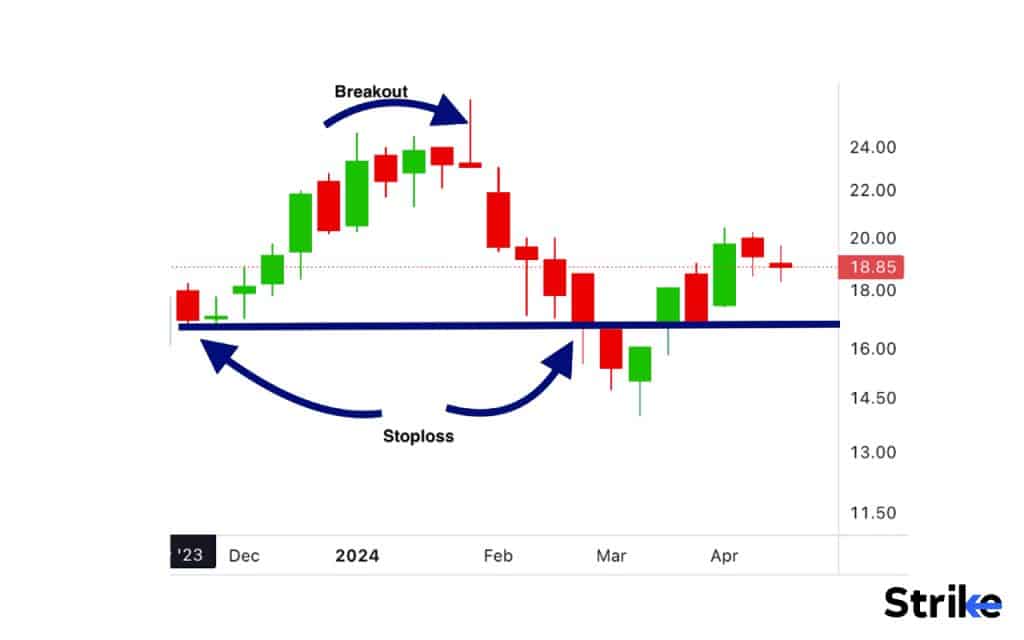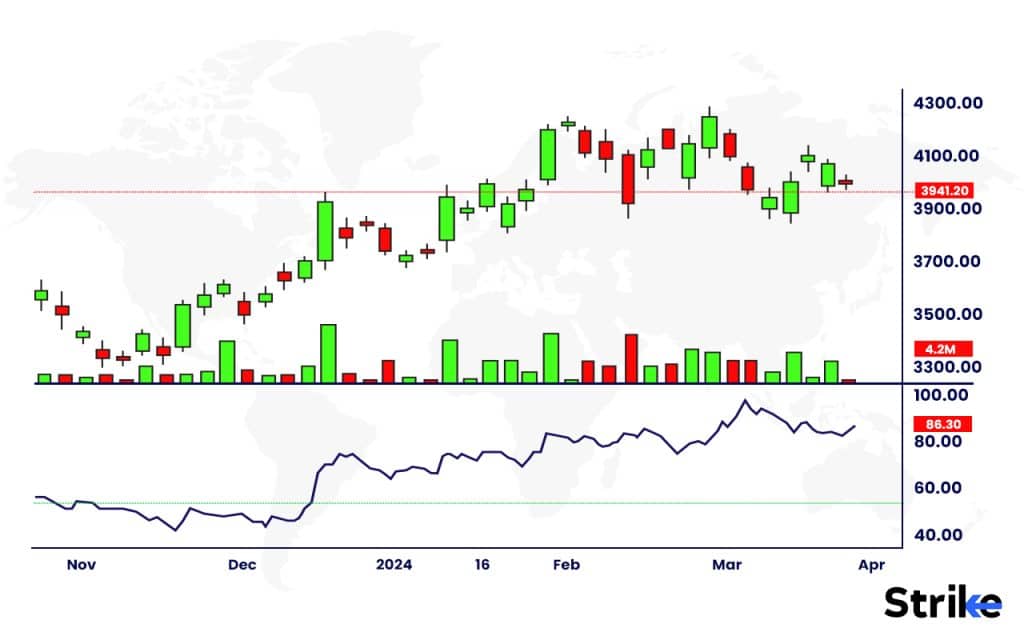
Position sizing determines the appropriate trade size to take based on your account size, risk tolerance, and stop loss distance. Position sizing is a core aspect of implementing an effective risk management strategy for traders of all experience levels. Determining the optimal trade size based on account parameters and one’s personal risk tolerance is crucial for long-term sustainability in the dynamic field of markets.
Fixed dollar, percentage, and contract-based approaches provide straightforward frameworks for allocating capital. Meanwhile, more sophisticated techniques, such as the Kelly criterion and Monte Carlo analysis, factor in historical metrics to scientifically determine optimal positions. Volatility-based sizing adjusts for fluctuating market conditions to maintain consistent risk exposures. Proper tool utilization streamlines the process for rule-based sizing, conforming to one’s predefined risk guidelines.
Maintaining control of drawdown through calibrated position sizing allows traders to capture available reward potentials over numerous repeating setups fully. A disciplined size determination process also promotes flexibility to changing markets and accounts and diversification across multiple trading vehicles.
What is Position Sizing?
Position sizing is the total number of units of stock bought or sold by a trader in a trade. Position sizing also refers to the rupee amount in a trade. Proper position sizing is crucial for managing Risk in trading – traders need to determine the appropriate number of shares or dollar amount to invest in each trade based on their account size, risk tolerance, and stop-loss level.
What are the popular Position Sizing methods?
The popular position sizing methods are Fixed Dollar Value, Fixed Percentage Risk, Contract Size, Leverage, Kelly Criterion, Volatility Based, Optimal f, and Monte Carlo.
1. Fixed Dollar Value
Fixed dollar value is a position-sizing strategy where the trader chooses the position size according to the Risk they are willing to take. The dollar amount determines the Risk here. In the Indian context, it is the amount in rupees. Let us look at an example to understand this.
Let us assume a trader is willing to risk Rs.39. Here, the trader enters a short position at a breakout at Rs.23 and sets a stop loss for Rs.16.50. Look at the chart below.

Hence, the maximum Risk in this is Rs.23 -Rs.16.50 = Rs. 6.50
Hence, according to the maximum Risk that the trader is willing to take Rs. 39,
Position size = 39/6.50 = 6.
Hence, we understand here that the shares the trader would buy is 6.
2. Fixed Percentage Risk
Fixed Percentage Risk is a position sizing method where the trader risks a fixed percentage of their account on each trade. The fixed Percentage Risk method involves calculating the position size based on the stop-loss price and setting the Risk per trade to a fixed percentage of the trading account.
For example, a trader with a Rs. 10,00,000 account who uses a 2% fixed percentage risk would risk Rs. 20,000 (2% of Rs. 10,00,000) on each trade. Under the condition that the trader wants to trade TCS shares with a stop-loss at Rs. 3000, the position size can be calculated as below.
Risk per trade = Rs. 20,000
Stop-loss price = Rs. 3000
TCS share price = Rs. 3200
Risk per share = Stop-loss price – Entry price = Rs. 3000 – Rs. 3200 = Rs. 200
Position size = Risk per trade / Risk per share
= Rs. 20,000 / Rs. 200
= 1000 shares
So the trader would buy 1000 shares of TCS with a stop-loss at Rs. 3000, risking Rs. 20,000, which is 2% of their Rs. 10,00,000 account. This way, the Risk is fixed at 2% on every trade.
3. Contract Size
Contract Size is a position-sizing technique where the trader buys or sells a fixed number of shares or contracts per trade. The contract size is predetermined based on the account size and risk tolerance.
For example, a trader with a Rs. 10,00,000 account may decide to trade 1 contract of TCS shares per trade. If one TCS contract represents 1000 shares, then the trader will buy or short 1000 TCS shares on every trade.
The Risk per trade is not fixed but varies based on the stop-loss price. If the trader sets a 2% stop-loss on the TCS trade, and the entry price is Rs. 3200, the stop-loss price would be Rs. 3136 (3200 – 2% of 3200). With 1000 shares per contract, the Risk per trade here is Rs. 64,000 (1000 * 64 loss per share).
So, the contract size is fixed at 1000 TCS shares per trade, while the rupee risk varies based on the stop-loss price. The trader needs to adjust their contract size based on account size to size the risks of each trade properly.
4. Leverage
Leverage is a position-sizing technique where the trader aims to utilize a fixed amount of leverage on every trade. The position size is adjusted to target a specific level of leverage based on the account size.
For example, a trader with a Rs. 10,00,000 account wants to utilize 5:1 leverage on each TCS trade. This means the total position value (quantity * share price) should be 5 times the account size.
If the trader wants to trade TCS at the market price of Rs. 3200, the position value should be Rs. 50,00,000 (5 times the account size of Rs. 10,00,000). To target 5:1 leverage with TCS at Rs. 3200, the trader can buy 15,625 shares of TCS (Position value of Rs. 50,00,000 / TCS price of Rs. 3200).
So the trader is risking Rs. 10,00,000 of their capital and borrowing Rs. 40,00,000 to control Rs. 50,00,000 worth of TCS shares, achieving 5:1 leverage. The number of shares bought or sold is adjusted for each trade to target 5:1 leverage based on the share price.
5. Kelly Criterion
The Kelly Criterion is a mathematical formula used to determine optimal position size based on win rate and payoff ratio. The Kelly Criterion calculates the percent of capital to risk on each trade.
For example, say a trader has a Rs. 10,00,000 account and is trading a TCS strategy with a 60% win rate and a 1:2 risk/reward ratio (average win is 2x average loss).
Plugging this into the Kelly formula
Kelly % = Win rate – (1 – Win rate) / Risk reward ratio
= 0.6 – (1 – 0.6) / 2
= 0.3 or 30%
This means the trader should risk 30% of their account, or Rs. 3,00,000, on each TCS trade.
In case they buy TCS shares at Rs. 3200, with a stop loss of Rs. 3100, the Risk per share is Rs. 100. So the position size would be 3,00,000 / 100 = 3000 shares to size the trade based on the Kelly Criterion properly.
The key is using win rate and risk/reward ratios unique to that strategy to identify the optimal position size. As the strategy performance changes, the Kelly position size should be adjusted
6. Volatility Based
Volatility-based position sizing uses the historical volatility of the asset to determine the appropriate position size. The goal is to size positions to limit Risk based on how much the asset price typically fluctuates.
For example, a trader analyzing TCS stock may find the average true range (ATR) is Rs. 53.19 over the last 14 days. This means TCS stock has moved Rs. 53.19 on average each day. See the chart below.

The trader’s account is Rs. 10,00,000, and they want to risk 1% or Rs. 10,000 on the trade. Then, they could determine the position size as below.
Risk per trade: Rs. 10,000
ATR of Infosys: Rs. 53.19
Infosys stock price: Rs. 3920.20
Position size = Risk per trade / (ATR x Infosys stock price)
= Rs. 10,000 / (Rs. 53.19 x Rs. 3920.20)
= 2 shares
By risking 1% based on the ATR, the trader is properly sizing their 2-share Infosys position to account for the typical volatility. As volatility changes, position size is adjusted.
7. Optimal f
Optimal f is a position sizing model that uses market statistics like win rate, payoff ratio, and account size to determine the optimal fraction of capital to risk on each trade.
For example, say a TCS trader has a 60% win rate, a 1:1.5 risk/reward ratio, and a Rs. 10,00,000 account. Plugging this into the optimal f formula gives the following:
f = (Win rate – (1-Win rate)/Risk reward) / Risk reward
f = (0.6 – (1-0.6)/1.5) / 1.5
= 0.4
This means the optimal fraction of the account to risk is 40% or Rs. 4,00,000.
Considering that TCS is trading at Rs. 3000 with a Rs. 100 stop loss, the position size should be as shown below.
Position size = Optimal f (Account size / Risk per share)
= 0.4 x (10,00,000 / 100)
= 4000 shares
So, based on the TCS strategy stats, 4000 shares or Rs. 4,00,000 is the optimal amount to risk on the next trade based on optimal f position sizing. This adjusts position size dynamically based on changing market conditions.
8. Monte Carlo
The Monte Carlo method uses simulations to determine the optimal position size for a given trading strategy. The Monte Carlo method tests a range of position sizes on historical data to see which size maximizes returns while minimizing Risk.
For example, a trader backtests a TCS strategy across 5 years of historical data. They want to find the optimal position size to maximize returns. The trader tests position sizes from 1000 to 5000 shares in increments of 500 using Monte Carlo simulation.
The simulation results show that a position size of 2000 TCS shares generates the highest projected return over the backtest period based on factors like win rate, risk/reward ratio, and volatility.
So, even though the TCS strategy could support a position size of 5000 shares, the Monte Carlo analysis identifies 2000 shares as the ideal position size for that strategy. The trader now scales into 2000 share positions on new TCS trades.
Position sizing is a critical aspect of risk management in trading. It requires traders to carefully determine the optimal number of shares or contracts to trade based on their strategy, account size, and risk tolerance.
How do you calculate your position size?
Calculating position sizing means figuring out how much of a particular asset (stocks, currency pairs, etc.) to buy or sell in a trade. First, look at the key factors below.
- Your Account Balance: This refers to the amount of money you have in your trading account.
- Risk Tolerance: The percentage of your account balance you’re comfortable risking on a single trade. This is personal, but most traders stay between 1-2% per trade.
- Stop Loss Distance: In pips (the smallest price movement of an asset), this is the difference between your entry price and where you set your stop loss (a predetermined exit point to limit losses).
- Pip Value: This varies depending on the asset you’re trading and the lot size. You’ll need to calculate it using your broker’s information.
Now, let us look at the calculation.
Let’s say,
- Your account balance: ₹100,000
- Risk tolerance: 2%
- Trade: EUR/INR currency pair
- Stop-loss distance: 50 pips
- Pip value per standard lot: ₹80
We will use the below formula.
Position size = ((Account balance x Risk per trade) / Pips risked) / Pip value
Now, let us calculate.
Risk amount: (₹100,000 * 2%) = ₹2,000
Units at risk: ₹2,000 / 50 pips = ₹40 per pip
Position size: ₹40 / ₹80 = 0.5 standard lots (or 5 mini lots or 50,000 units of EUR)
How to do Position Sizing?
Let us learn how to do position sizing through an example. Let’s say you have a trading account of Rs. 5,00,000, and you want to trade Reliance Industries (RIL) shares.
RIL is trading at Rs. 2450 per share. Based on your analysis of RIL price action and volatility, you set a stop loss at Rs. 2400 per share.
You determine that you will risk a maximum of 2% of your account value on this trade.
2% of Rs. 5,00,000 is Rs. 10,000. This is the maximum amount you are willing to lose if the stop loss is hit.
Now, to calculate position size.
Entry Price: Rs. 2450
Stop Loss: Rs. 2400
Risk per share = Entry price – Stop loss
= 2450 – 2400 = Rs. 50
Position Size = Maximum Risk / Risk per share
= Rs. 10,000 / Rs. 50
= 200 shares
So, based on your account size of Rs. 5 lakhs, the max risk tolerance is 2% (Rs. 10,000
What factors can affect Position Sizing?
Account size, risk tolerance, market conditions, etc., are key factors that affect position sizing.
- Account Size: The total capital available for trading impacts how many shares/contracts you can trade. With a larger account, you can take relatively bigger positions.
- Risk Tolerance: Your appetite for Risk, typically defined as a % of the account per trade you’re willing to risk, affects the position size. A higher risk tolerance increases potential position size.
- Market Conditions: Volatility, liquidity, and price levels affect Risk per trade, requiring dynamic position sizing between markets and periods.
- Trading Strategy: Scalping strategies may require smaller position sizes, while trend-following strategies are more suited for larger sizes. Position size should match the strategy.
- Instrument Traded: Each instrument, like stocks, futures, and forex, has a different risk profile, and position sizing needs to adjust accordingly.
- Diversification: Trading multiple instruments requires overall position sizing to control portfolio risk. Positions across assets should complement each other.
Position sizing depends on interconnected factors related to the trader, strategy, and markets traded. Traders need to be flexible in adjusting their position sizes.
What tools can help you with position sizing?
Tools that help you in position sizing include:
- Free online position size calculators.
- Customizable risk management spreadsheets.
- Built-in sizing tools in trading platforms.
- Trade management scripts that auto-calculate position size.
- Structured money management plans.
- Account size limits with brokers.
Using these tools, traders input their specific risk parameters and account details to determine the optimal position size for each trade. This helps remove emotion from sizing decisions and enforce responsible risk management.
What are the benefits of using Position Sizing?
The main benefit of using position sizing is risk management. Below are six main benefits of using Position Sizing.
- Effective risk management – Position sizing enables traders to limit the Risk taken on any single trade to an acceptable level based on their account size and risk tolerance. This prevents overexposure and helps avoid large losses that devastate an account.
- Optimized reward potential – Sizing positions appropriately allow traders to maximize returns on high-probability setups and trends. Larger position sizes are taken on favorable risk/reward scenarios.
- Maintains trading discipline – Using a rules-based sizing approach promotes discipline by removing emotion-driven decisions. Traders are less likely to overtrade or chase trades.
- Provides flexibility – Position sizing is adjusted based on changing market volatility, account size growth, and evolving trading strategies. Traders adapt their sizing as conditions change.
- Diversifies portfolio – Appropriate sizing across many positions diversifies Risk and protects against market fluctuations impacting a concentrated position.
- Improves risk-adjusted returns – Proper sizing optimizes risk-reward ratios across all positions, leading to potentially higher returns for the amount of Risk taken.
Determining and implementing a suitable position sizing methodology aligned to one’s goals, account size, and risk tolerance is a key factor for long-term trading success and profitability.
How does Position Sizing help in risk management?
Position sizing helps in risk management by determining the appropriate trade size to take based on your account size, risk tolerance, and stop loss distance. This ensures that you are not risking too much capital on any single trade. Position sizing also helps maintain proper diversification, as taking excessively large positions in individual trades leads to overconcentration and heightened portfolio risk. Adhering to prudent position sizing based on a risk management plan is a key element of trading discipline for long-term success.








![85 Common Stock Market Terminologies for Dummies [Updated List for 2026] 28 85 Common Stock Market Terminologies for Dummies [Updated List for 2025]](https://www.strike.money/wp-content/uploads/2025/04/Popular-Stock-Market-Terms-for-Beginners-Banner.png)










No Comments Yet.